Interfaces
Manila Bay Sustainable Masterplan
The Manila Bay Sustainable Development Masterplan (MBSDMP) [1] is an inclusive master plan for the sustainable development of Manila Bay.
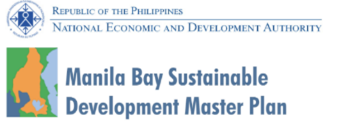
It is envisioned to guide decision-makers in assessing and approving programs, activities, and projects (PAPs) for implementation in Manila Bay and adjacent areas with significant influence on the bay.
The Manila Bay Sustainable Development Masterplan is consistent with the Philippine Development Plan (PDP), contributing to the achievement of the AmBisyon Natin 2040 vision and supporting internationally agreed goals such as those contained in the Sendai Framework for Disaster Risk Reduction (2015-2030) and the 2030 Agenda for Sustainable Development.
While traditional plans for coastal management and development assume public financing, the MBSDMP approach aims to include and make use of solicited private sector investments to achieve strategic management and implement development goals for the five following topics:
-
Improved Water Quality
-
Ecosystem protection
-
Upgrading informal settlement
-
Disaster Risk Reduction and Climate Change adaption
-
Inclusive growth
The North Manila Bay Flood Protection Strategy is a follow-up from the MBSDMP focused on five goals and specifically giving substance to the actions regarding the Design and Implementation Nature-Based Flood Protection Solutions (REF003) [1].
The primary interfaces identified are the following topics:
-
Coastal Line of Defence (CLD)
-
Reduce exposure to flooding
-
Restoring natural habitat and Ecosystem protection
-
Institutional set-up and capacity building for MBDSMP implementation
The Strategy has a direct link with the MBSDMP and was developed with inputs from experts and organizations that were also involved in the development of the MBSDMP. For more information, visit the Manila Bay Sustainable Development Masterplan website: http://mbsdmp.com/
Important zoning considerations that will be adhered to in this strategy are given in the figurea below. The figures show that the MBSDMP intends to transform the current “monoculture” of fishponds into a mixed Aquaculture, Fishery and Mangrove zoning. Integrating these three elements is a key challenge for the North Manila Bay Delta, and both the landscape propositions from Ecoshape and Wetlands Philippines (chapter 2.4.2) and this strategy aim to substantiate the proposed zoning.
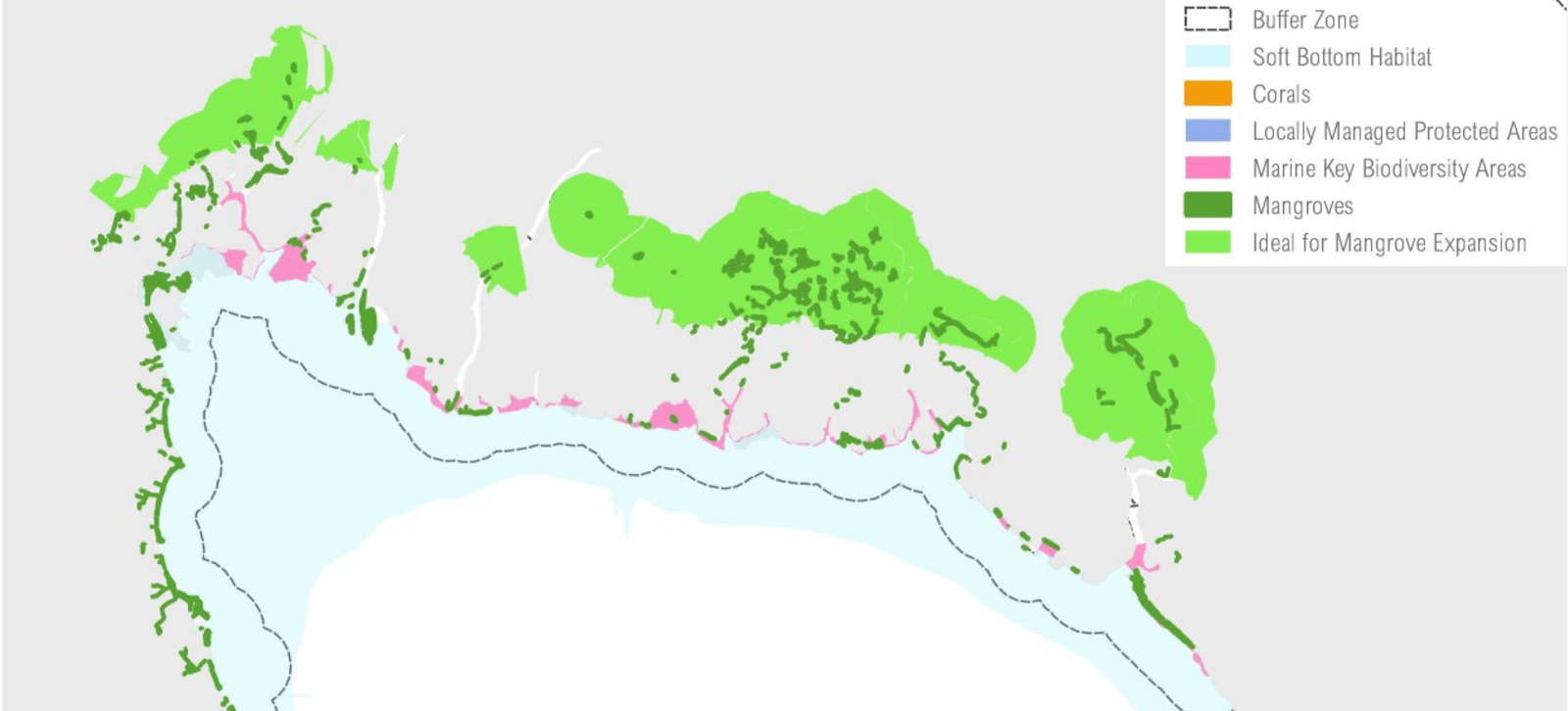
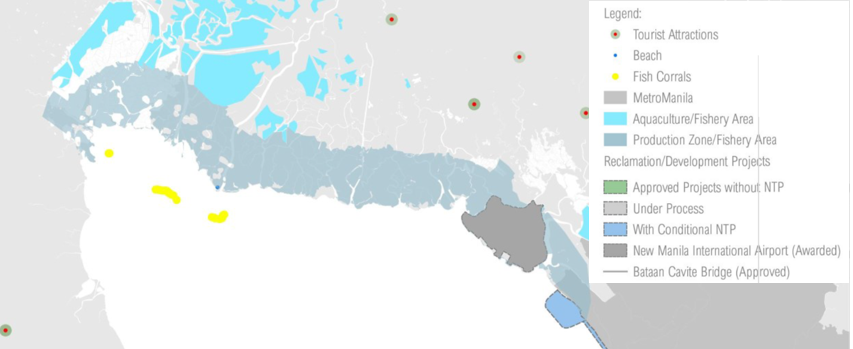
Building with Nature Asia Landscape proposition initiative
“Building with Nature Asia” (BwN Asia) is a regional initiative by Wetlands International, Deltares, and One Architecture, members of the Ecoshape Consortium [7]. BwN Asia has projects in China, India, Indonesia, Malaysia, and the Philippines. In each country, national offices of Wetlands International lead and guide the Ecoshape Consortium in developing landscape propositions to promote and implement Building with Nature solutions for climate-resilient green-grey engineering linked to ecosystem restoration, enhancing community food security and disaster risk reduction, including coastal flooding. In the Philippines, a plan has been developed for the North Coast of Manila Bay, specifically the Bulacan area. Wetlands International Philippines leads the initiative and is actively involved in several stakeholders and community engagement processes to promote BwN and the design of the landscape proposition. The proposition is endorsed by DENR.
Wetlands International Philippines has developed the landscape proposition, as shown in the figure below. For the entire image, refer to Appendix 1. The proposal includes, amongst others, the restoration of natural habitats (e.g. tidal flats), creation of a mangrove belt (green), protection of critical habitat and natural resources to increase safety resilience and livelihood security of coastal inhabitants of Bulacan.
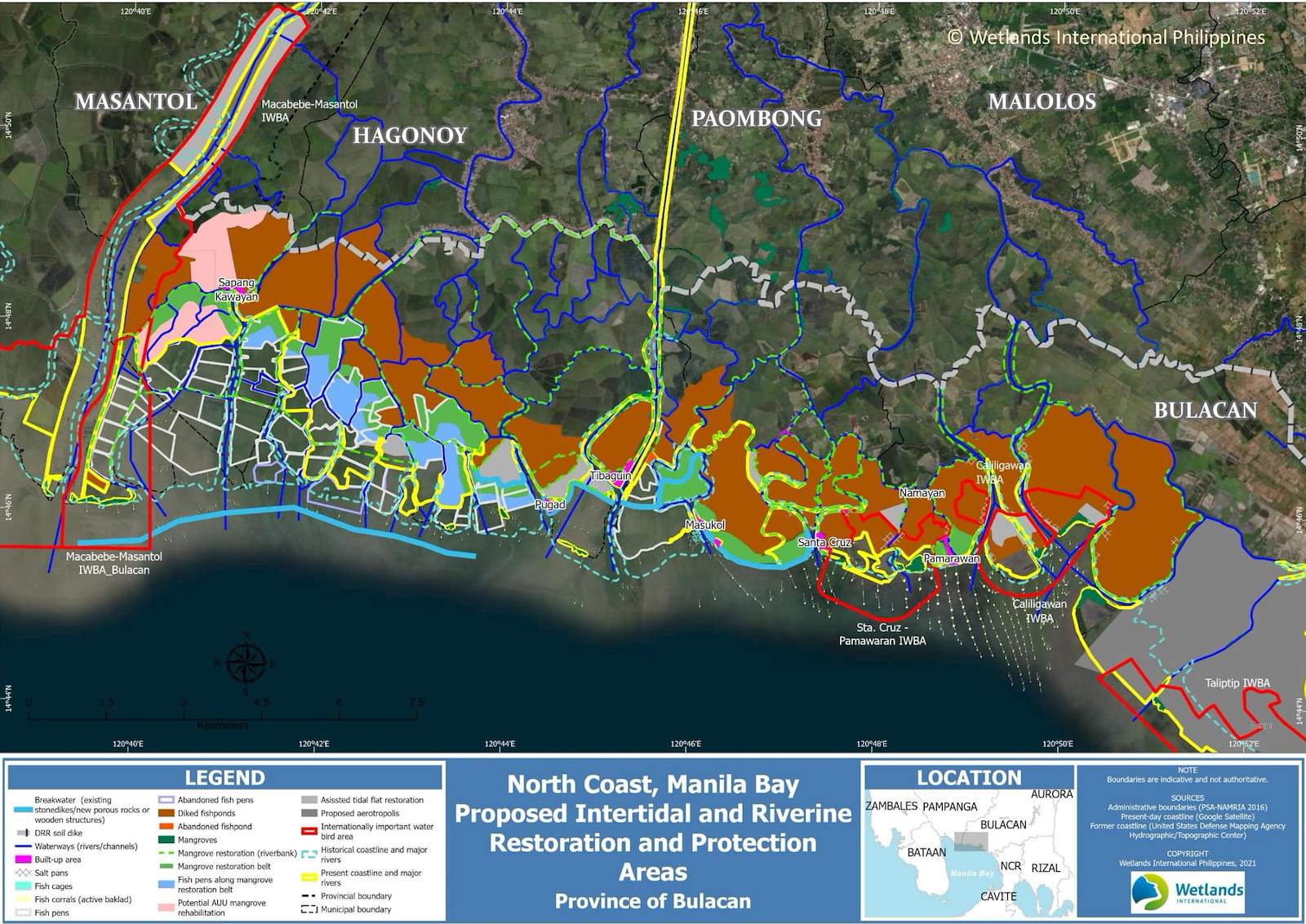
During the creation of the North Manila Bay Flood Protection Strategy, Wetlands International Philippines has been involved in discussions on Nature-based Solutions and methods for North Manila Bay. Furthermore, joint webinar sessions were organized. This strategy uses the landscape proposition as the possibility for alignment of any pilot projects. It has to be noted that the objective of the landscape proposition and the flood protection strategy are somewhat different but supplementary, being habitat restoration and flood protection, respectively, both using Nature-based Solutions. It has to be noted that this strategy is not a formal product of Wetlands International Philippines.
New Manila International Airport
One of the ongoing projects in Manila Bay is the unsolicited proposal from San Miguel Holdings Corporation for the financing, design, construction, operation, and maintenance of the New Manila International Airport (MIA) in the Municipality of Bulakan, Bulacan.
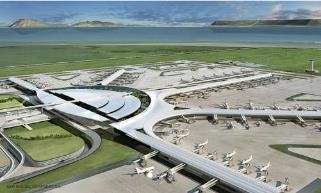
In addition, the Economic Affairs Committee of the House of Representatives recently approved the creation of the Bulacan Airport City Special Economic Zone and Freeport Zone (BACSEZFA) under House Bill (HB) No. 7575, which “shall cover the domestic and international airport, the Airport City and the entire Municipality of Bulakan in the Province of Bulacan.” Acknowledging the potential benefits of this project to uplift the socio-economic status of the surrounding areas and modernize air transport in the country, the construction of the international airport, and the creation of an ecozone in the area will further complicate the already stressed habitat and ecosystem of Manila Bay.
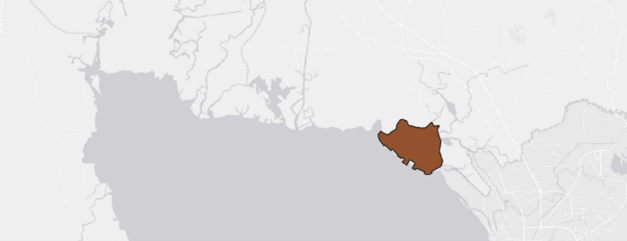
Currently, dredging an access channel, which is needed for the airport reclamation works, has been completed, and river dredging around MIA is about to start. San Miguel Holdings Corporation contacted the Dutch company Royal Boskalis Westminster N.V. to conduct the dredging works. As part of international Environmental and Social Impact Assessment (EISA) requirements, the biodiversity and social impact of the airport needs to be offset. The impact on biodiversity mainly involves the feeding and resting areas of (migratory) waterbird populations, as well as the human population that lives in the airport area.
During the creation of the North Manila Bay Flood Protection Strategy, there was contact with both San Miguel Holdings Corporation and Royal Boskalis Westminster N.V.. No agreements on alignment or collaboration were made.
Angat, Pampanga, Pamarawan and Malolos River Dredging
During stakeholder meetings, it was mentioned that recently, permits have been issued for dredging the rivers in the North Manila Bay Delta. Various attempts have been made to get more information on the area, amount and volume of dredging allowed. At this point in time, it is only known that there are “permits issued”, which DENR R3 EMB/CMOB does not know of. The origin of these permits most likely lies within the LGUs or Provincial government.